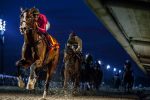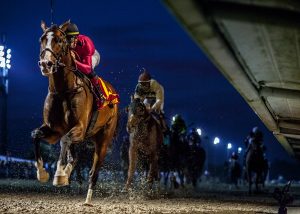A convivial morning on the gallops with Jamie Osborne has somehow morphed into a lesson in economics. The atmosphere remains convivial because if anyone can make you laugh while explaining portfolio theory, it is Osborne. Still, it is slightly surprising, as we rumble uphill alongside the Kingsdown Polytrack in his 4×4, to find that we are no longer talking about this son of Make Believe or that daughter of Clodovil, but have moved on to money and how it is made.
“Last autumn, if you’re a trader in second-hand horses, you had the perfect set of conditions,” Osborne reflects. “One thing you have to think a lot about is the cost of the raw material. After 2008, the yearling market contracted significantly and foal numbers went right down. So I don’t think we saw the level of correction in the price of yearlings that any of us were expecting. Plus, the Maktoum family jumped in, the Qataris came online, the Japanese started buying here and, okay, they’re at the top end but that filters down.”
Osborne has been drinking coffee, driving and keeping a sharp eye on his juveniles while relating this, an impressive feat of co-ordination. Somehow, while continuing to do all of these things, he lights up a cigarette.
“Last year we saw the supply had increased and was now back up to the pre-crash numbers, at a time when, domestically, people were sitting on their hands,” he says.
“The Qataris weren’t spending as much. There didn’t appear enough people in the market for the horses that were coming in. So I think we bought the best value I’ve ever bought. Now, the proof of the pudding will be in the eating. But I think we have some very cheap animals in here.”
Using his fifth hand, or possibly his sixth, Osborne produces a phone and starts filming the horses as they work.
“Normally, when you get your raw material cost falling, its overall value has fallen,” he remarks. “We have an extraordinary set of circumstances at the moment, whereby domestically we’re able to buy the raw material cheaper but the world is still on fire.
“With the weakness of the pound, they want to come here and spend. Their racing is buoyant, ours is arguing about prize-money. With the contacts I have around the world now, the regular customers, this is very attractive.
“My hopes for the year are that I have some very nice two-year-olds and they become worth a lot of money and they find new homes around the world in exchange for large cheques!”
Osborne knows what to do with a top-class horse, as evidenced by Toast Of New York, winner of the UAE Derby and beaten about an inch in the Breeders’ Cup Classic. He would very much like to have a few more of those and his door is open to anyone who might care to provide him with some likely types. In the meantime, he is determined to do a good job for owners who, having bought low, hope to sell high. It means parting with some animals who have only just started to show their potential, animals who would surely win some nice prize-money if they stayed in the yard. But that’s the gig.
“I’ve never been frightened to take a risk,” he says. “That’s nearly broken me, but now it’s kind of good. The risks I’m taking are viable ones; we’re dealing in enough horses that we’re going to have some nice, valuable ones. They might go completely under the radar, from the point of view of you in the press knowing about them, because they’ll be sold the minute they’ve done anything.
“Doing what I do, you have a choice between the Racing Post table and the balance sheet. John Gosden and co can have both, a healthy balance sheet and a sexy Racing Post table. Where I’m doing it, in that middle ground, buying commercial animals, I’ve got a choice. I can’t have both. If I choose to improve my stats I’ll end up making less money.
“So,there’s no room for ego. But I had enough ego massage in the first half of my career. I’m not after that, I don’t care. When somebody goes and wins with one of my horses, even if they’ve claimed it off me, I am genuinely delighted. Someone’s got to get a bargain from me at some stage – and they do.”
His horses having finished their work, Osborne is now steering us back to his yard in the heart of Upper Lambourn.
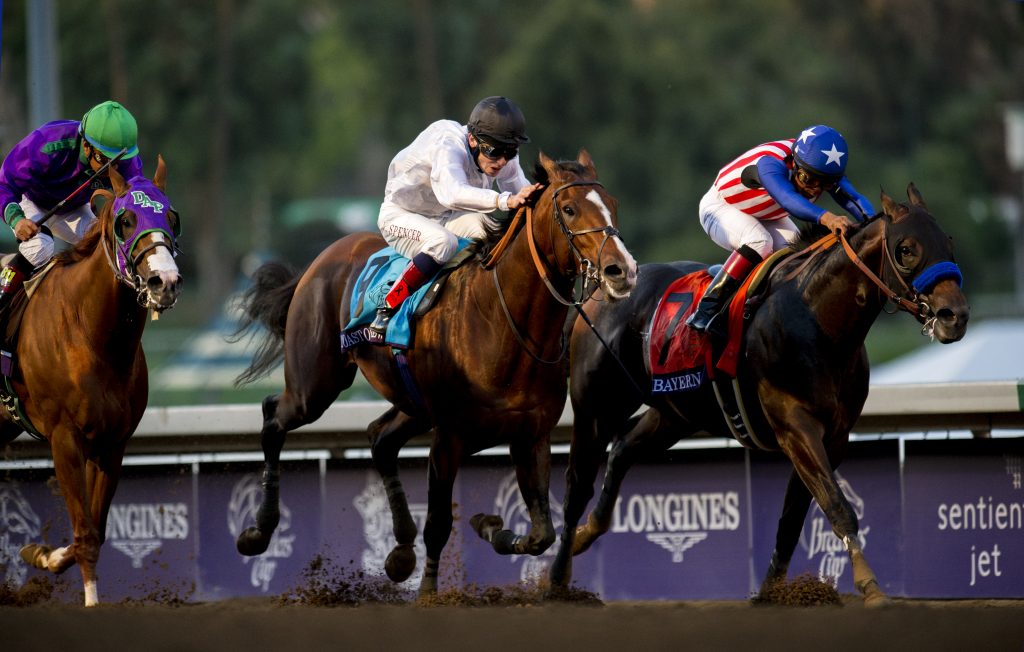
Toast Of New York (white) just fails to catch Bayern in the 2014 Breeders’ Cup – Phoyo: George Selwyn
He is thinking deeply about his subject as he turns these ideas over in conversation. It shows a serious, almost grave side to him that doesn’t get much of an airing in public. Earlier, he mentioned that he is “more of a reader than ever,” favouring books on history, science or Middle East politics. What happened to the cheeky chappie of the 90s weighing room?
He replies: “That was manufactured, of course it was! I was petrified to let anyone know I wasn’t out on the piss, shagging women every night. The reality was I was watching films of my riding and how other people rode, looking at other people’s horses, practising on an equicizer. But I wanted everyone to think that I’d stopped for five vodka and tonics on the way home. I had to work harder at being a jockey than I ever wanted anyone to know.”
His fitness took a lot of maintaining, because Osborne was never a natural sportsman. But there was more. His voice dropping to a conspiratorial whisper, he tells of how, in the midst of his success, he started taking secret riding lessons.
“It was a different era, it was all about bravado and not showing your competitors any sign of being human,” he recalls. “We had to be these autonomous machines that got on horses and beat them around a track.”
But Osborne wasn’t happy about his skill level. He raised the topic with Henrietta Knight, who pointed him to Yogi Breisner. “I sidled up to him one day and said, ‘It’s a bit embarrassing but I’m not doing very well. I need to improve. Do you reckon you can help me?’ I became his first pupil in racing.”
Having helped with his riding, Breisner also proved adept at shoring up Osborne’s confidence. The ex-jockey remembers one occasion when he was about to make a comeback from injury, having not so much as schooled a horse since the fall that broke a minor bone three weeks earlier.
“I’d got two or three rides at Bangor,” he says. “The night before, I realised that I was absolutely shitting myself. In that macho environment, one could never admit that you were anything other than, ‘Let me at it!’ I rang Yogi and told him, ‘I don’t want to go tomorrow.’”
Breisner arranged a practice session for him the next morning at the Oxfordshire base of Lars Sederholm, a famous trainer in the eventing world.
Osborne says: “There was an outdoor school with great big show jumps in it. Get out the car, horse is brought to me. ‘Go jump those’. What? It’d be easier to run underneath them!”
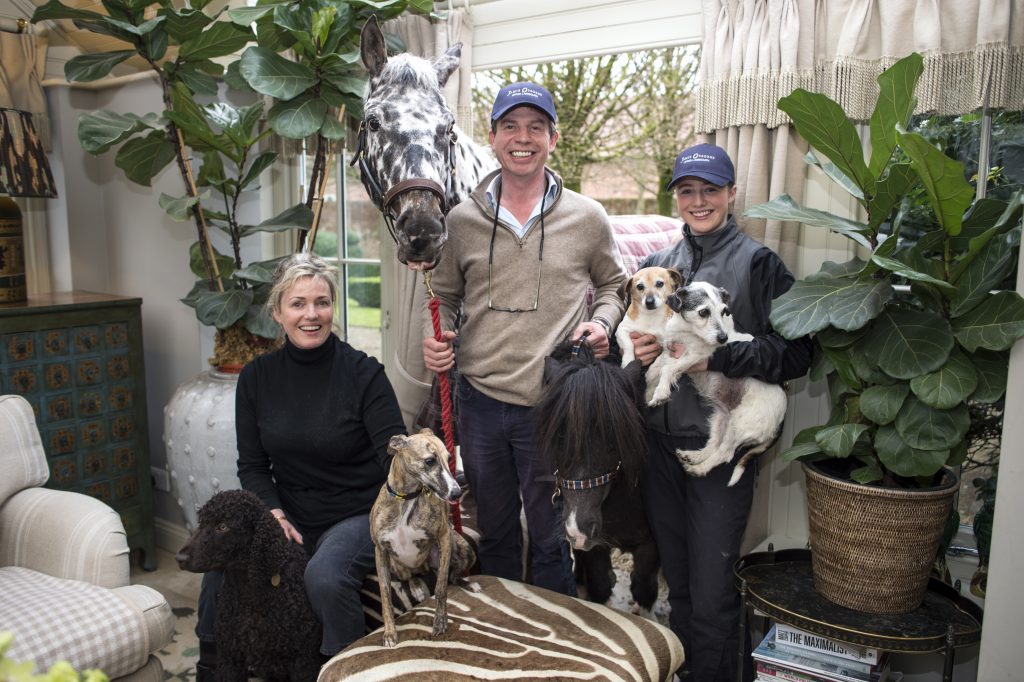
The Osborne clan: Jamie with wife Katie O’Sullivan, daughter Saffie, a horse, a pony and four dogs – Photo: George Selwyn
Osborne jumped around again and again. Then the horse was taken away, another one was produced, and he was sent round again. “I thought, ‘Jesus, that must be it’,” he says. “Then another one arrives. I can’t remember how many horses I sat on or how many fences I jumped. I got in the car, went to Bangor and had my rides.
“Those fences looked like little Cavalettis. I was thinking, ‘Why was I worried about this? This is easy! I’ve just jumped a thousand fences this morning. Why would this be a problem?’
“Yogi had that innate ability to know how to deal with me. He knew I was a confidence rider. He didn’t really teach me a lot, he just gave me the opportunity to free the brain up and get back in the groove. I owe an awful lot to him because I was a much better rider at the end than I’d been at the beginning.”
We are now in Osborne’s study. French windows open onto a garden in which his wife, Katie O’Sullivan, has a purpose-built studio, where she is working on a portrait of Nicky Henderson, due for delivery to Seven Barrows the next week.
Sky Sports Racing plays on a wall-mounted screen and Osborne eyes a replay from Sedgefield with suspicion as he talks. Old war stories aside, he doesn’t have much room in his life for jump racing these days, a reflection of the village where he lives, which he reckons is 70% focused on Flat racing now.
This will be his 20th season with a licence. There were times when he seemed odds-against to last this long, particularly a decade ago, when the collapse of Mountgrange Stud took away half his string and left him with expensive yearlings and no one to pay for them. Enough time has passed that Osborne can admit he was “technically bankrupt” at that point and lay awake at night, wondering if the bank would call the next day.
“It was tough. I had the support of Katie and the kids and we had to dig our way out,” he says. “It’s been difficult but we’re there. The thing has turned on its head completely. That is why my whole business has morphed from being a trainer who was desperate to win nice races, to being a trainer who was desperate to make money.”
Now 51, he is in a much better place and has ambitious plans to move his whole operation uphill, onto land behind the famous Upland stable. He points out where the house would go and where he’d build 64 boxes to go with the 52 he already has on the site.
The new boxes would follow a design he has been working on, twice as big as a standard box and only half of it under cover, to promote ventilation and reduce the risk of respiratory disease. He will also experiment with training some of the older, more robust horses out of a field this season; Raising Sand is one of those who appear to be healthier when not kept in a stable.
“It takes a bit of management,” he admits. “You have to look after your ground. You have to make sure you have an array of clothes for these horses, according to what the weather’s doing. But they’re much happier horses.
“What I’m also hoping for is that I have happy customers, all my children continue to work hard and do a bit of studying,” he says, with a glance over his shoulder at a grinning Saffie, “and we have a bit of fun doing it and everyone’s happy at the end of the year.
“Because there is a part of me that has now realised, having been through some pretty tough, tight times, where I wouldn’t say I was the happiest person in the world, I am enjoying this more than I’ve ever enjoyed it.
“I feel now that, after 20 years, I understand it, finally.”
‘I’d like to think there’s a business to take over’
The rising power at Old Malthouse Stables is the trainer’s youngest child. Saffie, now 17, made headlines last summer when she ended her career in pony eventing by winning team and individual golds at the European Championships, held in her father’s home county of Yorkshire. Her sights have, for years, been unwaveringly set on becoming a jockey; her parents’ hopes that this might prove no more than a phase are ebbing.
“I only met one person in my life more competitive than me, and I married her,” says Osborne of his wife, Katie O’Sullivan. “And we’ve bred this ridiculously competitive child.”
Saffie got an early taste of competition from showing ponies in ‘working hunter’ classes, at which she did well. “But to her it was like, anyone could do that, you just need a good pony,” says dad. “So she announced when she was 13 or 14, ‘I want to give this up now and go eventing.”
Not for the first time, or the last, Saffie’s precocious clarity in her ambitions rather floored the adults around her. At length, she guided her parents around to the idea and they were persuaded to splash out on an eventing pony.
“Then she realised, because we knew nothing about it, that it was probably not quite up to international standard,” says Jamie. “It was good and she won a national championship on it but it wasn’t quite up to European standards, so she identified another one that was quite expensive. I told her, having slept on it, ‘Saff, this is ridiculous. I cannot justify spending this amount of money on a pony.’”
Your typical child would, at this stage, explore tears and pleading as a means of changing the decision. Saffie’s plan was more mature, startlingly daring and entirely successful.
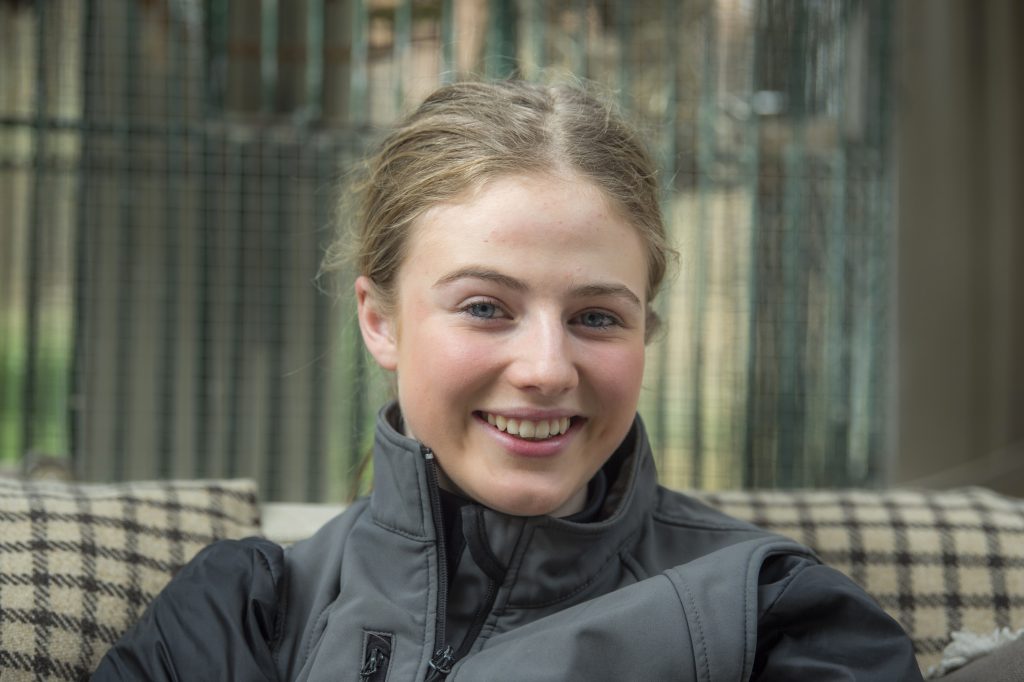
Saffie Osborne: set on a riding career – Photo: George Selwyn
“She wrote a proposal and took it to one of my owners,” says Jamie. “Aged 13, she got someone to drive her to Lord Blyth. She said, ‘Look, we can buy this pony for x, it’s deteriorated, I can get it back to what it was, I’ll get it on a British team and you’ll sell it for y.’”
This turned out to be Little Indian Feather, or Jojo, who bore Saffie to glory last August. Her watching father, judgement intact despite the nerves, sold the pony to ensure a tidy profit for Lord Blyth, completing the deal just ten minutes before she entered the showjumping arena needing no more than one pole down to clinch the victory.
“She was last to go, it was her’s to lose,” says Jamie. “Her ability to cope with the pressure was impressive. I’ve never been as nervous in my life. I don’t know how relevant that riding ability is to being a race-rider. It certainly can’t be detrimental. But more than that, what she’s done as a child will enable her to cope with pressure.
“When I was riding, you saw people who used to collapse a little bit on the big day. Mentality was one of the biggest factors in whether somebody made it or not. Riding ability was only part of it. I think that having competed at the highest level as a child gives you a massive advantage.”
Saffie’s next idea was that she should be home-schooled and her parents are surprised to learn they have agreed to it. As a result, she can ride out every day and is energetic around the yard, at one point talking her father into changing his plans for the next lot.
No less an authority than Matt Chapman has singled her out as champion jockey material but, whatever she achieves on the track, it would be easy to imagine Saffie taking over the family yard one day.
“Who knows?” says the current trainer in response to the thought.
“I’d like to think there’s a business there to take over. If she has her riding career, you don’t know how long that’s going to be – and maybe then I’ll have something to hand over to her.”


